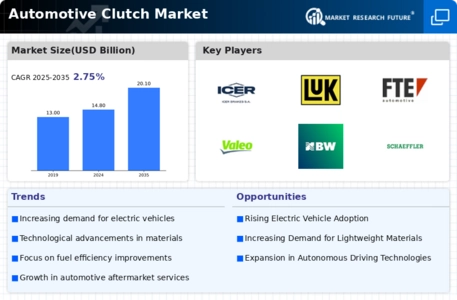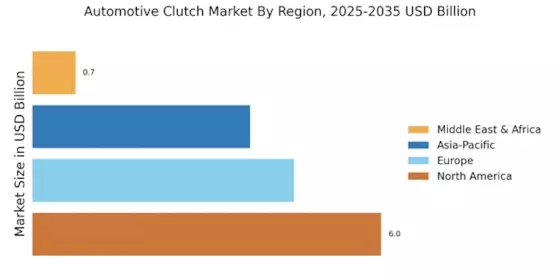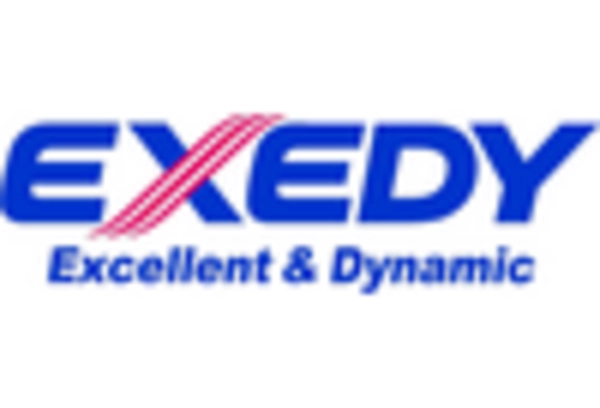Rising Vehicle Production
The automotive clutch market appears to be positively influenced by the increasing production of vehicles across various segments. As manufacturers ramp up production to meet consumer demand, the need for reliable and efficient clutches becomes paramount. In 2025, the production of passenger cars and commercial vehicles is projected to reach approximately 90 million units, which could drive the demand for clutches significantly. This surge in vehicle production not only enhances the market for traditional manual clutches but also for advanced automatic and semi-automatic systems. Consequently, the Automobile Clutch Market is likely to experience growth as manufacturers seek to improve performance and durability in their products.
Growing Demand for Fuel Efficiency
The automotive clutch market is significantly impacted by the rising consumer demand for fuel-efficient vehicles. As fuel prices fluctuate and environmental concerns escalate, manufacturers are compelled to develop clutches that optimize engine performance and reduce fuel consumption. In 2025, it is anticipated that vehicles equipped with advanced clutch systems will achieve fuel efficiency improvements of up to 15% compared to traditional systems. This trend not only aligns with regulatory standards but also appeals to environmentally conscious consumers. Consequently, the Vehicle Clutch Market is likely to see an increase in demand for innovative clutch solutions that contribute to overall vehicle efficiency.
Expansion of Electric Vehicle Market
The automotive clutch market is undergoing a transformation due to the expansion of the electric vehicle (EV) market. While traditional clutches are less prevalent in fully electric vehicles, the hybrid segment still relies on advanced clutch systems to manage power distribution effectively. As of 2025, the hybrid vehicle market is projected to grow substantially, potentially reaching a market share of 25%. This growth necessitates the development of specialized clutches that can handle the unique requirements of hybrid powertrains. Therefore, the Auto Clutch Systems Market must adapt to these changes, focusing on innovative solutions that cater to the evolving needs of hybrid and electric vehicles.
Regulatory Standards and Emission Norms
The automotive clutch market is increasingly shaped by stringent regulatory standards and emission norms imposed by governments worldwide. These regulations compel manufacturers to enhance the performance and efficiency of their vehicles, including clutch systems. As of 2025, it is expected that compliance with these standards will drive the demand for advanced clutch technologies that minimize emissions and improve fuel economy. This regulatory landscape not only influences product development but also encourages manufacturers to invest in sustainable practices. Consequently, the Vehicle Clutch Market is likely to witness a shift towards more eco-friendly clutch solutions that align with global sustainability goals.
Technological Advancements in Clutch Systems
Technological innovations within the automotive clutch market are transforming the landscape of vehicle performance and efficiency. The introduction of dual-clutch systems and electronically controlled clutches is indicative of a shift towards more sophisticated solutions. These advancements not only enhance the driving experience but also contribute to improved fuel efficiency and reduced emissions. As of 2025, it is estimated that the adoption of advanced clutch technologies could account for over 30% of the market share, reflecting a growing preference for high-performance vehicles. This trend suggests that manufacturers are increasingly investing in research and development to create cutting-edge clutch systems that meet evolving consumer expectations.


















Leave a Comment